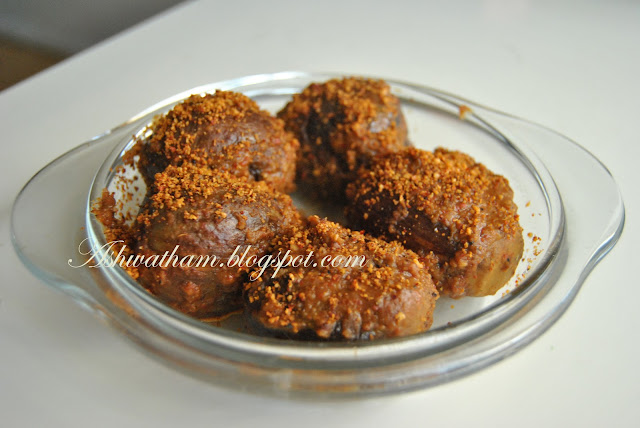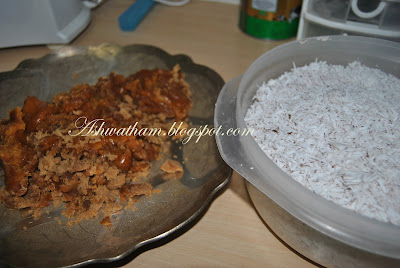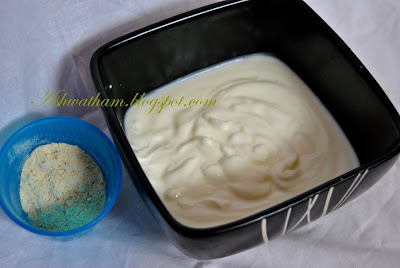Dhokla or Dhokra is a vegetarian food item that originates from Gujarat state in India. It is made with a fermented batter made up of with chana daal and rice. Dhokla can be eaten as a breakfast or as a side dish or even as a snack.
This is pretty much similar to the south Indian tiffin variety Idly. To make dhokla Rice and chanadaal are used, in the ratio 2:1 and soaked for 5-6 hours. The mixture is ground and this paste is fermented over night. The fermented batter is then steamed for about 15 minutes on a flat dish and cut into pieces. These chopped pieces are seasoned with mustard seeds, corinader leaves and fresh coconut. For the typical Gujarati style, an equal amount of water and a little sugar is added to the seasoning. As I want it spicy, I have avoided adding sugar.
Dhokla with Mint chutney
Ingredients:
Chana daal / Bengal gram - 1 cup
Rice - 2 cups
Turmeric - pinch
Salt
Baking soda - 1/2 tsp
For seasoning -
Oil - 1 tbsp
Mustard - 1/2 tsp
Urad daal / Black gram - 1 tsp
Chopped corainder - 1 tbsp
Grated fresh coconut - 1tbsp
Method:
Wash and soak the chana daal and rice for about 5-6 hours. Grind them into a smooth paste in a blender. Consistency should be like beaten yoghurt or like idly batter. Ferment it for about 6-8 hours or over night.
To the fermented batter add salt, baking soda and turmeric. Mix it thoroughly. In the mean time, boil the water in a idly / dokla steamer.
If you dont have one then, take a wide bottomed pan and add water till about 1 inch depth. Now place a metal stand or any wide bowl.
Now greese a cake tin or pressure cooker tin and pour the batter into the tin.
Slowly place the tin into the wide bottomed vessel on top of the metal stand or plate and cover it with lid.
Steam the batter for 15 minutes on medium high flame.
Steamed dhokla
Turn off the heat and prepare the seasoning. Heat a small pan with 1 tbsp of oil. Add mustard and urad daal to it. When the urad daal changes the colour, add 1 tbsp of water to it and immediately pour over the steamed dhokla.
Now cut them into small pieces and garnish with coriander and grated coconut.
Serve it with any chutney of your choice. Mint chutney is the best option.



































